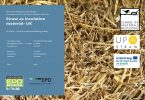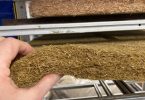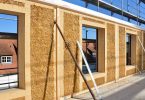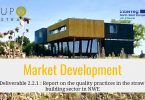The research paper highlights the importance of the (interconnected) systems theory model as one of the most relevant and pertinent approaches toward addressing sustainable construction material technology for the future.
By taking a values-based approach that integrates social and ecological good with health, resource efficiency, and durability, the paper advocates the urgency for future material technology research to re-examine natural and sustainable building techniques vis-à-vis systems thinking and therefore, a more holistic approach towards design and the building process. In doing so, the paper examines the viability of straw bale as a sustainable material technology for our future construction needs. As evidenced by numerous precedents, straw bale buildings result in energy-efficient, durable and non-toxic structures. Straw bale walls incorporate remarkable thermal, acoustic, fire, and insect resistance properties. In addition, they are characterized by relatively low maintenance, high longevity, improved indoor air quality, and embody intangible aesthetic qualities. Most importantly, they are environmentally responsible and contribute to the sustainable development of the built environment. Related to straw bale wall systems, the research paper explores essential concepts related to its building science including, straw stalk, structural system, stud framing, pony wall, wall cavity, and base plaster. In terms of building performance, (of the myriad qualities associated with straw bale) three of its most critical (and perhaps most misunderstood) characteristics are examined – thermal capacity, moisture performance, and fire resistance.
Material presented herein has been largely gleaned from first-hand experience while working with experts on a straw bale structure at Yestermorrow Design/Build School in Vermont.
Author: Rodrigues, Arsenio, 2015







